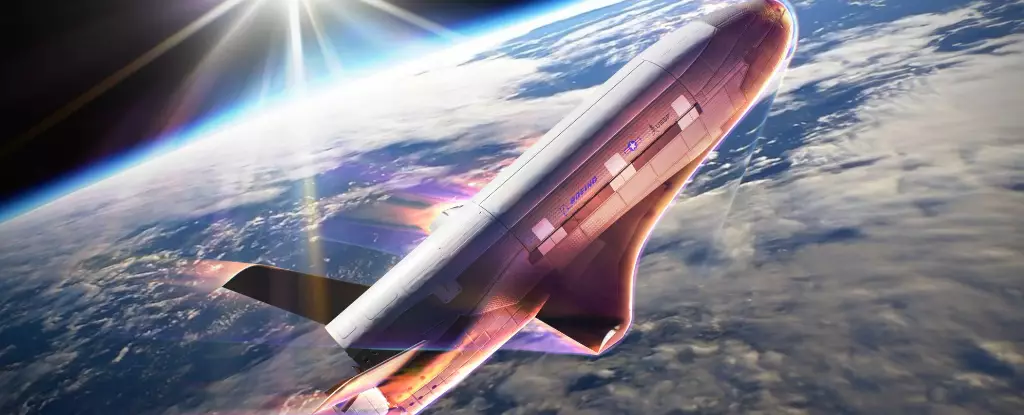In the realm of modern aerospace, few machines ignite as much intrigue and speculation as the X-37B Orbital Test Vehicle (OTV). Since its inception in 2011, this Boeing-designed spaceplane, under the purview of the United States Space Force (USSF), has remained an embodiment of innovation shrouded in secrecy. Its missions, carried out in the elusive domain of Low-Earth Orbit (LEO), have not only pushed the boundaries of aerospace technology but also played a crucial role in national security. The latest mission of the X-37B, which commenced on December 29, 2023, known as OTV-7, promises to unveil new capabilities and technologies that underscore the importance of space in the vast arena of defense.
Operational Dynamics of the X-37B
The X-37B operates at altitudes ranging from 240 to 800 kilometers (150 to 500 miles) above Earth, where it conducts a variety of tests, including assessing the implications of space radiation and advancing Space Domain Awareness (SDA) technologies. Utilizing its unique design, the vehicle is capable of executing actions that typical satellites cannot, positioning it as a formidable tool for demonstrating advanced technologies relevant to future long-term space missions.
The X-37B’s operational uniqueness stems from its ability to maneuver within lower orbital altitudes, and its recent mission plans include a series of unprecedented orbital changes. Notably, it intends to utilize “aerobraking,” a technique borrowed from historical missions like those of the Mars Global Surveyor and other Martian projects. This method will allow the vehicle to adjust its orbit by skimming against Earth’s upper atmosphere, reducing speed with minimal fuel expenditure. Such maneuvers not only enable fuel efficiency but also contribute to stealth, making the craft less detectable to adversaries during its low passes of the Earth.
The USSF’s objectives extend beyond mere research; they encompass a broad strategy in national defense that emphasizes agility and uncertainty in space operations. Secretary of the Air Force Frank Kendall highlighted the significance of these maneuvers, framing them as a demonstration of the Space Force’s push for innovation in the face of evolving threats. The orbiter’s ability to adopt unpredictable flight paths enhances the security of U.S. operations, presenting adversarial nations with a challenge in tracking and predicting its movements. By leveraging the lessons learned from decades of space exploration, the X-37B’s aerobraking has become a focal point in these endeavors.
A deeper understanding of the implications of such operations can be gleaned from former USAF Secretary Heather Wilson’s remarks. She elucidated that the X-37B’s unique trajectory allows it to move undetected and unexpectedly, particularly in the vicinity of adversaries. This capability to alter orbits discreetly challenges the existing predictive models utilized by tracking systems, creating a scenario where adversaries must continuously recalibrate their assessments. This unpredictability is strategically advantageous, especially in a geopolitical landscape fraught with uncertainties.
Experiments Beyond National Security
The scientific pursuits of the X-37B, while often overshadowed by its military applications, are equally significant. The current mission hosts an array of experiments including the “Seeds-2” project in collaboration with NASA, which investigates the effects of space radiation on plant seeds. Such experiments are not only valuable for agricultural advancements but could potentially inform long-term human spaceflight initiatives and sustainability in outer space.
Furthermore, as considerations for space debris mitigation continue to gain traction, the X-37B’s intention to eject service module components aligns with global efforts to ensure responsible use of space. This initiative demonstrates a commitment not only to advancing technological capabilities but also to promoting sustainable practices in space exploration.
As the X-37B progresses through its seventh mission, its achievements thus far serve as a testament to the cooperative interplay between technological innovation and strategic military applications. The USSF’s emphasis on agile and efficient missions stands as a precursor to a new era of space operations where scientific inquiry and national security coexist. As adaptability and stealth become cornerstones of aerospace strategy, the future of the X-37B and similar missions promises a new frontier in maritime and extraterrestrial defense.
The X-37B’s blend of experimental science, strategic defense capabilities, and unprecedented maneuverability underscores its pivotal role within the United States’ vision for space exploration and national security. Amidst the aura of secrecy and speculation, one thing remains clear: the X-37B is poised to redefine our understanding of and capabilities in the final frontier.


Leave a Reply